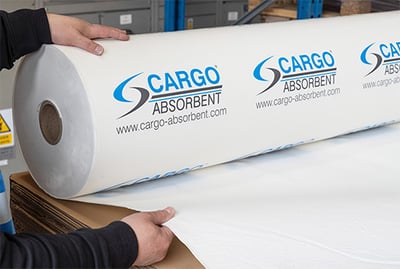If liquid escapes from air cargo into the aircraft fuselage, then there is a risk of damage, including over the longer term of corrosion. Corrosion has been identified as the cause of some aircraft failures that have resulted in loss of life.
In this article I highlight the best practices for managing and containing situations where there is risk of liquids being discharged during transit on an airplane. There is also an interesting case study where an airline is handling wet cargo which is causing serious corrosion in the body of the aircraft.
Wet cargo
Some cargo should be classified as Wet Cargo, as it contains liquid, discharges liquid, or by nature may generate liquid.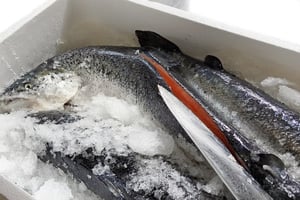
Some examples of wet cargo are:
- Liquid in watertight containers
- Wet substances not packed in watertight containers such as fresh or frozen meat, fruit and vegetables and other perishable products
- Products packed in ice, such as fresh or frozen fish and seafood consignments;
- Live animals from which produce liquid (mainly mammals);
- Goods which may produce liquid due to their nature. E.g. condensation.
IATA give some guidelines which I have reproduced here as a reminder of actions they recommend taking to avoid damage to the airplane.
IATA Ground Handling Guidelines
6.7. Wet Freight (WET) Loads containing liquids or from which liquids may ooze out because of their nature (other than dangerous goods) are considered as Wet Freight (e.g. live animals, fresh or frozen meat, fish shipments cooled with water, ice, etc.).
- When handling and loading wet freight, special care shall be taken that
- the floor of the compartment and/or the unit load device as well as other load is protected
- .containers are stowed in upright position, i.e. the seal is always at the top to prevent dripping.
- the special handling advice "This Way Up" is strictly adhered to and the label affixed.
- damaged packages or packages suspected to be damaged must not be carried.
Some recommendations:
Packaging must be secure and capable of maintaining the shipment in a totally leak-proof condition, allowing for variations in atmospheric pressure and rapid changes in temperature during the flight.
- All containers must be constructed of good quality waterproof materials and must be strong enough to allow product to be stacked on top.
- Bags or sacks must be water resistant and packed tightly to stop the movement of contents during transportation. Containers must always be securely closed to prevent loss of content.
- Containers holding liquid must not be entirely full. About 20 percent of the container’s height must be left unfilled to prevent leakage of contents from an increase of temperature during transportation.
- Live fish are packed in robust polythene bag with water at third of its capacity, securely fastened at the top and wrapped into another polythene bag also securely sealed.
- Spill containment sheeting such as Cargo Absorbent placed under and around wet cargo will contain spillages.

"THIS WAY UP" labels/marks must be appropriately fixed/printed/stamped on at least two opposite sides of each package. Orientation marks must be colour durable (red or black), meeting IATA standards.
CASE STUDY
This unnamed airline uses narrow body aircraft to ship passengers and cargo between islands in the far east.
They have a huge problem with the largely perishable food products being transported leaking significant amounts of liquid.
The pictures below show the amount of water in a typical cargo hold, and the damage it does.
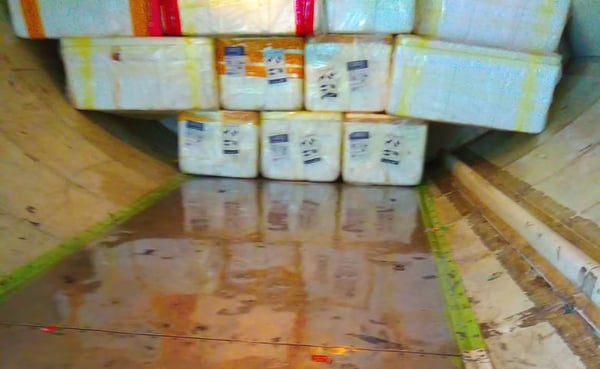
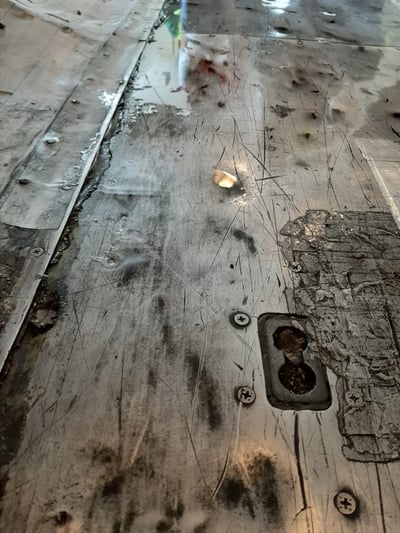
As you can see below there is a large amount of perforations resulting from corrosion caused by this liquid.
While the aircraft is being loaded water pours out of these holes - see picture below!!
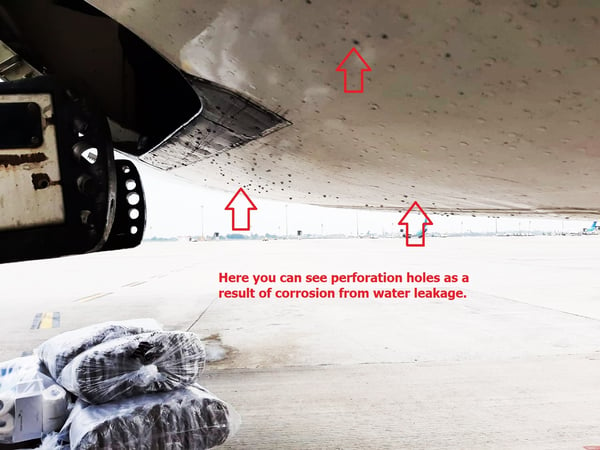
Hence there is an urgent problem to be solved.
One of the challenges faced was the fact that due to the size of the airplane it had to be loaded by hand which involved a lot of foot traffic.
Solution
In this particular instance a robust absorbent sheet with a waterproof backing that could withstand heavy foot traffic and had an absorbent capacity of 3 litres of liquid per square metre was tested.
The sheets of the absorbent material were taped together using waterproof cloth tape to ensure this absorbent sheeting contained any liquids.
See picture below.
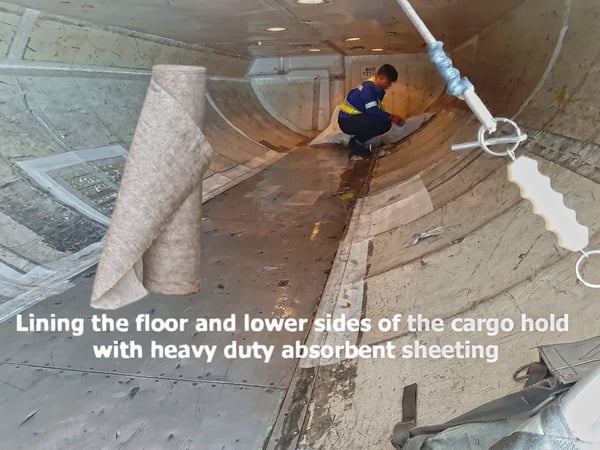
On larger aircraft which are loaded using aircraft pallets or containers, these can be lined with Cargo Absorbent at the point they are packed, before being loaded on the aircraft.
The absorbent sheeting can absorb up to 5 litres of liquid per square metre and has a waterproof liner to prevent leakage through the sheeting. These products are specifically designed for the aircargo industry and are guaranteed quality with a superior performance to meet the needs of air cargo couriers.
If you would like more information, or need some advice click on the image below.


